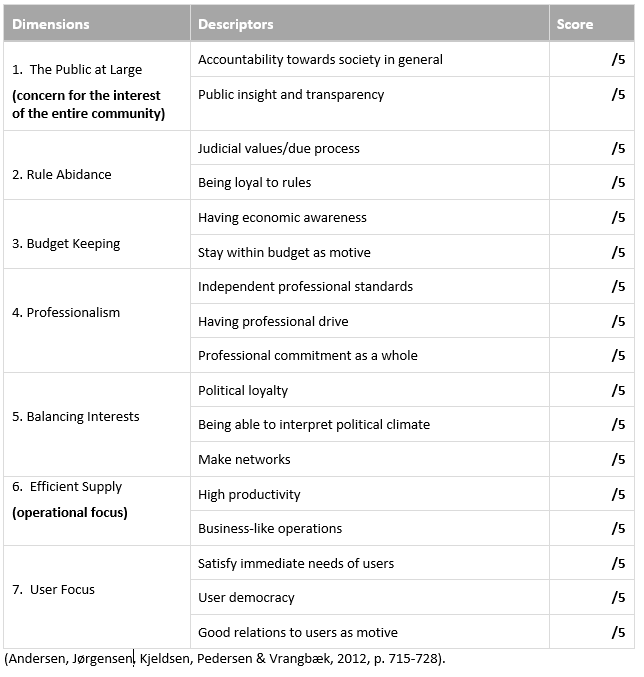Module 1: Strategy and Governance
Topic 1.2: Alignment and Public Sector Value
The concept of strategic alignment
Given the imperative to deliver something, within a specific context and governance structure, what does the public sector manager rely on to enable delivery? One important component is the concept of strategic alignment, a key pathway to successful execution. Alignment matters because as you saw in GSZ633 Managing Outwards in a Networked Government, government and the public sector operate in a global mindset of a networked system.
Strategic alignment is the result of internal processes, structures, people and capabilities that ideally are in collaboration and ‘synch’ within the organisation so that project activities support the desired overall strategic goals (Shenhar, Milosevic, Dvir and Thamhaim, 2007)[1].
A state of strategic alignment results from the integration of strategic focus, operational efficiency and team leadership, often due to top management support, integration of internal and external awareness, and high levels of motivation and a sense of purpose. Alignment is particularly important when we consider change initiatives – we might consider this as a realignment imperative.
Required
15 mins
Consider the level of strategic alignment that occurs within your context.
- How important is alignment for you, your team, and the broader organisation, to achieve its prescribed outcomes?
- What changes, if any, do you recommend or desire?
Linking alignment with organisational structure
The structure of the organisation is important to ‘strategic alignment’.
Johnson, Whittington, Scholes, Angwin and Regner (2014)[2] describe organisational structures as the roles, responsibilities and reporting relationships in organisations, that might reflect power and people alignments, hierarchies, control mechanisms, and team and work styles. Functional structure including skills requirements and maps, collaboration and team systems, divisions and production/service functions and locations, all have an impact. These are but some of the possible elements of an organisation’s structure.
The key question of course is how should any organisation – in part or whole – be structured to deliver success? One way to help decide is to look carefully at an organisation’s overall strategy, its current and desired systems, and its strategic capabilities.
Organisational configurations focus on an organisation’s design.
In the public sector domain, one would expect that senior leaders and the political structure would determine, at least formally, the configuration of the entity and its components.
However, the formal and informal configuration of the entity matter to the public sector, NGO and not-for-profit manager, because this is the environment and context in which the manager must operate, and achieve specified objectives.
In conclusion, public sector managers need a strong operational knowledge of organisational structure, configuration, and inherent nuances. This knowledge enables the manager to leverage and enhance strategic alignment, and thus a greater likelihood of success for themselves and their teams.
Linking Alignment and Public Sector Value
The logic of alignment suggests that higher levels of strategic alignment are more likely to enhance the likelihood of delivering the desired outcomes, and thus the implied or specified public value. Many attempts have been made to ‘value’ public sector value!
Table 1.1, Public Value Dimensions, below, lists one set of measures related to public value measurement (Andersen et al 2012)[3]. These dimensions focus on elements of organisational behaviours and ‘ways of working’ that are to some degree proxies for exploring alignment.
Required
30 mins
Please reflect either on an initiative in which you are, or have been, involved. Read the ‘7 dimensions of Public Value’ contained in Table 1.1. The attributes of each dimension will also guide you to the potential meaning of the dimension.
As a rough pass quickly score the degree to which you believe/feel that the project adhered to the attribute as you understand it, with 0 – ‘Not at all’, and 5 – ‘Completely’. If you don’t understand the attribute, or it does not apply, please mark as NA.
Look at the pattern.
- Which of the attributes/dimensions seem to have been most relevant to the initiative?
- Which have the highest/lowest scores?
Now consider:
- What were your overall impressions of the project?
- What did you learn from this quick exercise?
- Has the application of the scale, limited as it is, added to your understanding of the project, organisational alignment, and public sector value?
Table 1.1 Dimensions of Public Value
Deeper Learning
25 mins
For deeper insights, please refer to the Mazzucato, M., & Ryan-Collins, J. (2022) article that outlines the overall methodology which underpins the dimensions.
- Shenhar, A. Milosevic, D., Dvir, D. & Thamhaim, H. (2007). Linking Project Management to Business Strategy. Newton, PA: Project Management Institute. ↵
- Johnson, G., Whittington, R., Scholes, K., Angwin, D. & Regner, P. (2014). Exploring Strategy: Text and Cases (10th ed.). UK: Pearson. ISBN: 9781292007007. ↵
- Andersen, L., Jørgensen, T., Kjeldsen, A., Pedersen, L. & Vrangbæk, K. (2012). Public Value Dimensions: Developing and Testing a Multi-Dimensional Classification. International Journal of Public Administration, 35(11), 715–728. ↵


